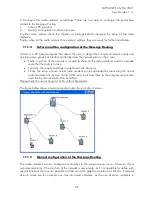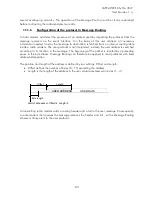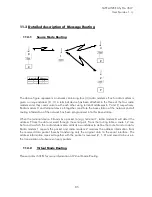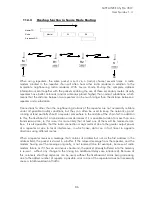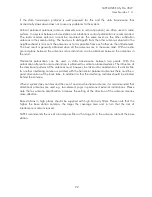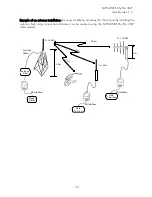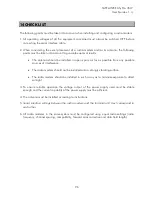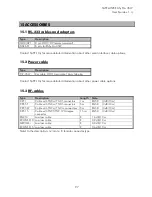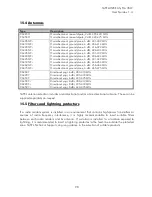
SATELLINE-EASy Pro 35W
User Guide v.1.4
94
13
DESIGNING SYSTEMS
13.1
Factors affecting the quality and distance of the radio
connection
•
power of the radio transmitter
•
sensitivity of the radio receiver
•
tolerance of spurious radiation’s of the radio modulating signal
•
amplification of transmitting and receiving antennas
•
antenna cable attenuation
•
antenna height
•
natural obstacles
•
interference caused by other electrical equipment
The transmitter power of the SATELLINE-EASy Pro 35W is 35 W (maximum) and the sensitivity of
the receiver better than -114 dBm. Thus in a flat area and in free space with a 1/4 wave antenna
(antenna amplification 1dBi) and antenna height of 1 m communication distances of 3 to 4 km
can be achieved. Distances may be considerably shorter in situations where there are metallic
walls or other material inhibiting the propagation of radio waves.
Over long distances, increasing the height of antennas can often solve problems caused by
natural obstacles. A ten-fold increase in distance can be achieved with the use of amplifying
antennas. Frequent topographical variations over long distances may require that at least one of
the antennas be raised to a height of 10 to 20 m.
If the antenna cable is more than 10 meters long it is necessary to use a low loss cable (< 0.7 dB
/10 m) in order not to waste the antenna amplification. Adding a repeater station can also solve
problematical radio connections. In systems with many base stations the RSSI-signal can be used
to assist in choosing the base station with the best signal. A communications network can also be
built with a combination of cables and radio data modems.
The SATELLINE-EASy Pro 35W operates in the 450 MHz band, where man made interference is
insignificant. Long distance interference needs not to be taken into account even in special
weather conditions.
The SATELLINE-EASy Pro 35W tolerates normal levels of interference that occur. However,
exceptionally high levels of interference can break through the safeguards and thus cause errors
in data transfer. In mobile vehicle applications the range of operation can be increased by
dividing the transmitted data into e.g. 50...500 byte long blocks and by re-transmitting the
defected blocks.
A sufficient safety margin can be obtained by testing the communication path using extra 6 dB
attenuation at the antenna connection and with slightly less effective antennas than those to be
used in the final system.



